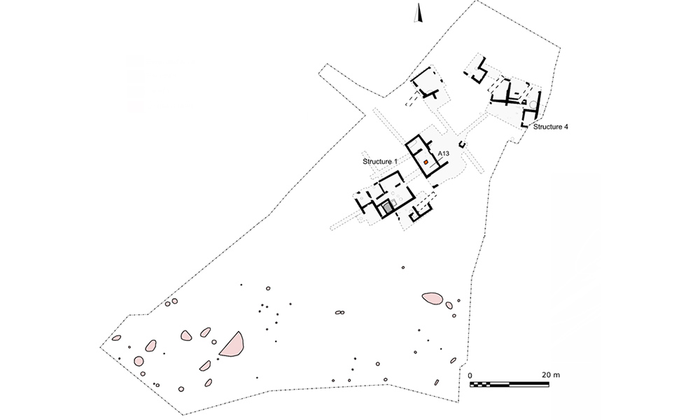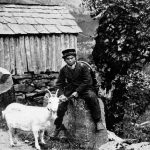The archaeology of the Roman period has traditionally been focused on monumental aspects, but very little is known about what the daily life of peasantry was like. An investigation by the Universidad Carlos III de Madrid (UC3M) delves into the life of peasant settlements based on the archaeological findings discovered in the Community of Madrid, in the numerous rescue excavations that were carried out during the real estate bubble period.

This research project, funded by the Community of Madrid’s Talent Attraction programme, is revealing aspects about the life of the humblest peasantry of that time, of which little information was available until now.
“The study of this hidden archaeological heritage is allowing us to learn how they interacted with the surrounding landscape, the type of crops they grew preferentially, how they cooked, the domestic animal species they exploited, the type of crockery they used, how exchange circuits worked at a local and regional level, etc.”, says the project manager, Jesús Bermejo, professor in the Department of Humanities: History, Geography and Art at UC3M.
The study reveals, for example, that Madrid’s gastronomy could have inherited typical dishes from farms in the central areas of Roman Spain, such as potaje and cocido (typical soup and stew). Researchers have found remains of pots that were used to cook these dishes, with a very similar method to the current one. Those peasants threw a piece of meat together with the available vegetables and left them on the fire in a very uncontrolled way, while they carried out the agricultural work.
“They left the pot on the fire very early in the morning, went to work in the fields, came back and ate communally, because the patterns we see on the crockery give us a much more collective vision,” explains Professor Bermejo.
This also gives us clues about the social relationships of that period: the act of eating was not an individual process, but a collective one, which could bring a large number of people together.
Sites in Barajas, Fuenlabrada, Getafe or Leganés
Due to their provisional nature —associated with the different constructions and public works where these rescue excavations have been carried out—, none of these archaeological settlements have been preserved and most people are unaware of their existence. One of the objectives of this research project is to give greater visibility to these sites, both socially and from a scientific point of view.
“Many of these sites are in towns such as Barajas, Fuenlabrada, Getafe or Leganés, where many people who are not aware of the existence of this archaeological heritage that reflects the life of the humblest sectors of past societies are living”, explains Professor Bermejo.
Innovation and knowledge transfer in archaeology
In the case of prospecting – the exploration of the land to discover the existence of sites –two elements have revolutionised the practice of archaeological research in recent decades, according to scientists. The first one has been the use of GPS devices and other remote sensing systems for the georeferencing of archaeological findings. The second one is the generalisation of geographic information systems (GIS), which have made it possible to analyse a huge amount of archaeological data in relation to different geographic and environmental variables.
“In the case of the analysis of archaeological findings from excavations, the use of new methodological perspectives such as the so-called household archaeology is revolutionising our way of understanding the archaeological record”, says Jesús Bermejo.
The results of this research project, as well as other related studies, are collected in The Archaeology of Peasantry in Roman Spain (De Gruyter, 2022), the first monographic volume that addresses the subject of Roman peasantry in the Peninsula. This publication, co-edited by Jesús Bermejo together with Ignasi Grau, professor of Archaeology at the University of Alicante, brings together the contributions of a group of researchers who are developing pioneering and innovative perspectives focused on Hispanic-Roman rural society through different methodological strategies and various archaeological records. Many of these projects are based on the development of archaeological prospecting in various peninsular regions, such as the interior of the province of Alicante or various places in southern Extremadura. In other cases, the studies arise as a result of different excavation work, such as those carried out in the surroundings of the Villa de Almenara de Adaja-Puras, in the province of Valladolid. In this regard, the volume features a large amount of archaeological information which is unpublished or published in a very fragmentary way.
More information:
Bermejo Tirado, Jesús & Grau Mira, Ignasi (2022). The Archaeology of Peasantry in Roman Spain, Berlin, Boston: De Gruyter, 2022. https://doi.org/10.1515/9783110757415
Press release from the Universidad Carlos III de Madrid – UC3M on the peasant life in Roman Spain.


